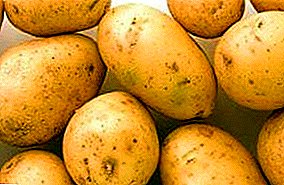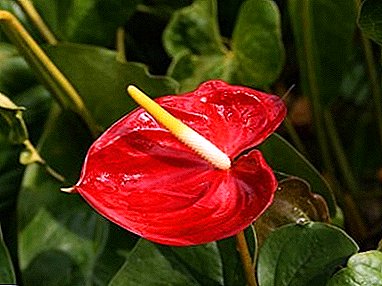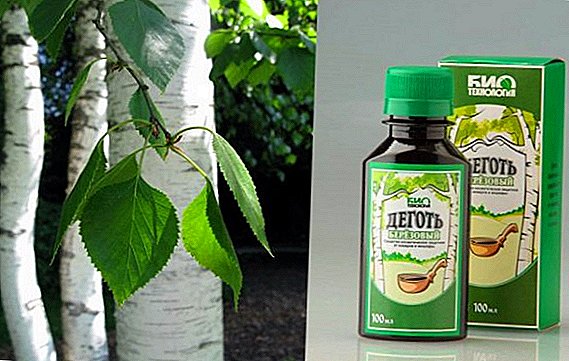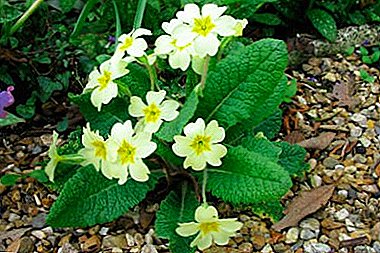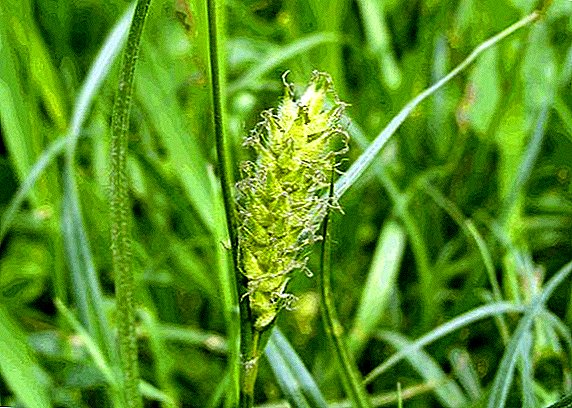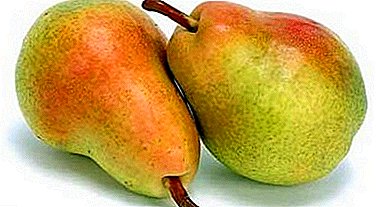 The season of mushrooms in the Leningrad region begins after the first autumn rains, and the collection peak is in October. You can collect them in the most unexpected places. If you are an avid mushroom picker, then there will be enough of a couple of places where you can get such an amount that you can not only eat at the moment, but also prepare for future use. Consider the most popular edible mushrooms that can be found when going for a walk in the forest.
The season of mushrooms in the Leningrad region begins after the first autumn rains, and the collection peak is in October. You can collect them in the most unexpected places. If you are an avid mushroom picker, then there will be enough of a couple of places where you can get such an amount that you can not only eat at the moment, but also prepare for future use. Consider the most popular edible mushrooms that can be found when going for a walk in the forest.
White mushroom
It belongs to the genus Borovik and is edible. Main characteristics:
- The hat. It is colored brownish and can reach 25 cm. The convex shape of the cap indicates that the plant is young and flat, that the mushroom has outgrown and aged. The film is velvety, with pulp tied tightly.
- Leg. Similar to the barrel, elongated in the center and thick in the lower and upper parts. It grows up to 12 cm, 7 cm thick. At the junction with the cap a grid of light streaks is formed.
- The flesh. Dense, light white color. When the fungus is aging, it becomes fibrous and turns yellow.
Familiarize yourself with the varieties and beneficial properties of ceps.
Ceps grow in all types of forests. These plants begin to germinate in late spring or early summer, it all depends on the ambient temperature. They cook different dishes, as well as dried and marinated for the winter.
Did you know? The average life cycle of the white fungus is no more than 10 days. It is important to immediately treat it after cutting, because after a few hours only half of the beneficial substances remain in its pulp.

Oyster
Oyster mushroom belongs to the category of edible mushrooms. Due to its low calorie content and the content of nutrients, it is appreciated by people who follow a diet.
The main characteristics of the fungus:
- The hat. It has an unusual shape, resembling a shell, with curled edges, up to 2 cm in height and up to 25 cm in diameter. The skin is glossy. Over time, the edges are stretched, and the cap becomes almost flat. Color can vary from white to purple.
- Leg. Smooth to the touch of white or grayish color, grows up to 3 cm. Its shape is cylindrical, slightly curved to the side, while expanded from bottom to top like a funnel.
- The flesh. Dense and juicy.
We recommend to get acquainted with the methods of growing oyster mushrooms at home in bags, as well as methods of freezing and drying oyster mushrooms.

Mushrooms grow on dead trees or stumps. They appear from the ground at the beginning of autumn and grow until the beginning of winter, they like coolness. Snacks are prepared from them, soups are cooked on their basis and garnishes are prepared.
Wolf
Mushrooms of this genus are of different species, the most popular are: pink, white, and the white crayfish. All these mushrooms are conditionally edible, which means they need special treatment before consumption.
Main characteristics:
- The hat. Depending on the species, it can be pink, white or other color, it grows up to 12 cm. When the fungus is small, it is convex, but with time it becomes flat, and a recess forms in its center. The peel is covered with a little slime.
- Leg. In young specimens whole, and in adults - hollow. It grows up to 2.5 cm thick and up to 7 cm long. The leg is one tone lighter than the cap.
- The flesh. Due to the fact that it is dense and strong, the fungus is well transported. After cutting, a milky sap appears, which does not change under the influence of air.

You can meet volushki in mixed forests, with a predominance of birch trees. The growing season is in July and lasts until October. Before starting the preparation, the wafer should be soaked in salted water. Most often they are then pickled, salted or frozen.
Important! Useful substances in the composition of fungi favorably affect the work of the brain, remove fatigue, relieve stress, and also tone up the body.
Bitter
The mushroom resembles a mixture of toadstools, russules and towels. In Europe, this mushroom is considered inedible, and in our country it is still eaten. It belongs to the category of conditionally edible.
Main characteristics:
- The hat. In young plants, convex with a pointed tubercle in the middle, with time it is aligned and even pressed in the center. The surface can be dry and smooth or sticky and glossy, depending on the weather. Its dimensions are small - up to 10 cm. There are plates on the bottom.
- Leg. In the form of a cylinder, not more than 9 cm high, smooth to the touch and 1.5 cm thick. The color of the leg is lighter than that of the cap.
- The flesh. In young individuals is white, with time it gets dark. The body of the fungus is dense and has a light smell of wood. Milky juice stands out on the cut.

Bitter grows in any forest. The ideal place is pine forest, as well as lichen habitats. The first mushrooms grow in early summer, the end of the season falls in the middle of autumn. Bitter salted, fried or pickled. Before this, pre-soak to remove bitterness.
Mouth black
Treats conditionally edible mushrooms of the Russula family. Like all other mushrooms of this type, it needs to be soaked before cooking. In the people it is called chernushka.
Main characteristics:
- The hat. The form is wide-crown-shaped, pressed to the middle, with the edges wrapped inside. It grows up to 20 cm. Olive color, but may vary. The skin in the center is dry and smooth, and at the edges - fibrous-scaly. On the inside are the plates.
- Leg. To the touch it is slippery, it grows to a height of 8 cm, with a diameter of 3 cm. At the top, the foot expands.
- The flesh. The texture is dense and fragile, white in color, at the cut point becomes gray. Her juice is bitter.
Find out what types of milk mushrooms exist and how to distinguish a real mushroom from a false one.

Black milk mushrooms grow in coniferous and mixed forests, where there are many fallen leaves. They grow from the beginning of summer to the first cold weather. They prepare various dishes from them, but before that they are necessarily soaked or treated in another way.
Raincoat
Another name - golovach, refers to the type of edible mushrooms. Main characteristics:
- The hat. It is a body of a rounded structure, covered with spinous outgrowths, which then fall off.
- Leg. False, small size, tightly fused with the upper part.
- The flesh. The young rain coat is solid and white.
This type of mushroom grows in deciduous forests. You can find in the last months of summer and early autumn. Raincoats after peeling are fried, dried or stored in a cool place. 
You will probably be interested to read about which mushrooms are edible and poisonous, and also to learn how to check the mushrooms for edibility using popular methods.
Goat
This species is popularly called lath, before they were fed animals. However, it refers to edible mushrooms.
Main characteristics:
- The hat. It may be convex or flat, along the edge it is thinner, it grows up to 8 cm in diameter. In dry weather, the skin is smooth and in rainy it becomes oily. Bottom has a tubular layer.
- Leg. Short, no more than 6 cm. From below narrowed, often curved. The color is the same as that of the cap.
- The flesh. The consistency is soft, odorless, at the cut point the color does not change. During heat treatment, the color turns red.
 Goats are common in pine or deciduous forests on sandy soils. Mushrooms fructify from midsummer to October. Before cooking, they are soaked, removing the damaged parts. Then cook, and then prepare various dishes.
Goats are common in pine or deciduous forests on sandy soils. Mushrooms fructify from midsummer to October. Before cooking, they are soaked, removing the damaged parts. Then cook, and then prepare various dishes.Ring cap
Mushroom food grade belongs to group 4 due to its taste and aroma.
Main characteristics:
- The hat. Hemispherical, growing to 14 cm, becomes like a cap. The color ranges from yellow to brown. Bottom plate yellow.
- Leg. It grows up to 12 cm. There is a ring of one color with a mushroom. Over him - yellow scales. Under the ring, the leg is thinner.
- The flesh. White, when pruning yellower.
 Loves to be located on the wet edges of deciduous and mixed forests. Looking for a bell cap from mid-August until the end of October. Mushrooms are boiled and salted.
Loves to be located on the wet edges of deciduous and mixed forests. Looking for a bell cap from mid-August until the end of October. Mushrooms are boiled and salted.Chanterelles
Edible mushrooms of orange color, with high gastronomic qualities.
We advise you to read about where chanterelles grow and how not to get false mushrooms, how useful they are, and how to pickle and freeze chanterelles at home.Main characteristics:
- The hat. At first, convex with curled wavy edges, it grows up to 10 cm. With age, it becomes funnel-shaped. The plates go to the leg.
- Leg. In diameter up to 2 cm, solid, extended up and turning into a cap, smooth to the touch.
- The flesh. Dense, non-fragile, with a pleasant aroma and spicy taste.

Important! The main advantage of chanterelles - they are not wormy.
Oiler
These mushrooms get their name from the sticky skin. Main characteristics:
- The hat. Hemispherical or conical shape. Can reach 15 cm in diameter. As it grows, it straightens and becomes like a cushion. The peel is in the form of an oily film, easily separated from the pulp.
- Leg. Cylindrical shape, up to 10 cm in height. Color white with a dark bottom.
- The flesh. Dense, but at the same time soft, yellow-white in color, on the cut becomes red or violet. Mushrooms have a pleasant smell of pine needles.
Mushrooms grow under coniferous trees, as well as under oaks and birches. They do not like dark forests, so they can be found on the forest edges or sides of forest paths, in the clearing. They can grow in groups and singly from mid-summer until the second half of autumn. Mushrooms are used for drying and pickling, and they are fried and boiled. 
Important! For growth, the braces need rain, but they quickly age - after a week the flesh becomes flabby and darkens. In addition, this type of mushroom is greatly affected by worms.
Mokhovik green
Parasitic fungus, which is a symbiosis of mycelium and moss. It belongs to the category of edible representatives of this class.
Main characteristics:
- The hat. Convex in young representatives, with time it flattens and cracks, reaches 10 cm in diameter. The skin is velvety from green to brown. Bottom spongy layer.
- Leg. Wrinkled, smooth to the touch, without scales. Its length reaches 10 cm.
- The flesh. Light shade, gets a blue tint at the site of incision.
Grow in deciduous and coniferous forests. Collect mokhoviki from mid-summer and until the second half of autumn. These mushrooms are most often dried or pickled. 
Autumn honeycomb
Another name - hemp, is an edible mushroom, with a pleasant taste.
Main characteristics:
- The hat. At first a convex shape, then it becomes flat with a wavy edge, with an average size of 12 cm. In the middle of the cap there may be a small tubercle or light brown flakes on a general background of beige or copper-brown color.
- Leg. Fibrous, up to 10 cm long, thin (no more than 2 cm), expanding at the bottom. The color can be light or yellow-brown, the entire surface has small scales of a light shade.
- The flesh. White and dense with a pleasant smell and taste in young specimens and thin, with a rough structure - in old mushrooms.
It grows in deciduous forests, is a parasite, as it settles on stumps, fallen trees. Abundantly fruiting throughout September. Mushrooms are subjected to various types of processing: cooking, frying, pickling, salting and drying. 
Important! Depending on what the honeydew settled on, the color of the fungus depends on it. If it is an acacia or a poplar, then the mushroom will be a honey-yellow shade. On the oak, the shade will grow with a red tint, and the ephedra will award it with a brown-red color.
Boletus
Boletus - an edible mushroom of the genus Leccinum, the name comes from the place of growth.
Main characteristics:
- The hat. In young plants is white, with time it becomes brown. It looks like a hemisphere, and as it gets older, it becomes a pillow. It grows to a diameter of 18 cm.
- Leg. Cylindrical in shape in length up to 15 cm. The surface is covered with longitudinal scales.
- The flesh. White color, dense consistency, darkening in the cut. In the old fungus, it is loose and watery.

Mushroom grows in light deciduous and mixed forests, where there is birch. You can meet them during the flowering of bird cherry and harvest until mid-autumn. They cook different dishes, and also dry and marinate for the winter.
Boletus
Obabok, he is a redhead - an edible mushroom, which got its name from the trees under which mushrooms most often grow.
Main characteristics:
- The hat. The young mushroom has a hemispherical shape, tightly wrapping the leg. Over time, it becomes pincushion-shaped and can reach 30 cm in diameter. The peel of the cap has a bright color, similar to the color of autumn aspen leaves. It is dry and velvety.
- Leg. Stocky, club-shaped, up to 25 cm high. Its entire surface is covered with small brown scales.
- The flesh. Elastic and fleshy, the structure is dense white. The cut turns blue, then turns black.

Growth area - deciduous and mixed forests. Grow in small groups, sometimes one at a time in wet areas in thickets of grass, blueberries and forest ferns. You can collect the pubs from mid-June until October. Redhead is boiled, stewed, pickled, fried, dried and frozen.
Important! So that the orange-cap boletus is not black, before cooking it is soaked in 0.5% citric acid solution.
Redhead
Ryzhiki - edible mushrooms, which are leaders in taste.
Main characteristics:
- The hat. Fleshy, up to 10 cm in diameter. Shape - wide crown, tucked edge, and then straight and smooth. The skin is moist, smooth, orange with dark areas over the entire surface.
- Leg. Cylindrical shape, up to 7 cm high. Inside empty, fragile, with small lacunae.
- The flesh. Delicate, tasteless, odorless. When deformed, orange juice is secreted.
 Localizations of this species are found in the fields and forest cuttings. Appear in the middle of summer. They are used in fried and salted form.
Localizations of this species are found in the fields and forest cuttings. Appear in the middle of summer. They are used in fried and salted form.Russula
Main characteristics:
- The hat. The shape of the hemisphere, which becomes flat as it gets older, sometimes with the edges rolled up, reaches 15 cm in diameter. Coloring edible species is in the brown-green range. Depending on the weather, the skin can be dry or sticky, matte or shiny, easily separated from the pulp. The inner side is covered with white or yellowish plates.
- Leg. Has the shape of a cylinder up to 10 cm high, white or yellow in color.
- The flesh. It is dense, white in color, with old age it becomes fragile and crumbles.
It will be useful for you to learn more about such mushrooms as boletus, boletus, boletus boletus, boletus ryadovki, ryadovki, violin, sandpits, mokruhi, parsley, boletus mushrooms, mushrooms, russula, kids, raincoats and morels.
 Russulae grow in mixed forests, parks, birch groves and in wetlands of rivers. The first mushrooms appear at the end of spring, and in large quantities at the end of summer or early autumn. The food is taken boiled, fried and stewed. They can also be salted. For drying are not suitable.
Russulae grow in mixed forests, parks, birch groves and in wetlands of rivers. The first mushrooms appear at the end of spring, and in large quantities at the end of summer or early autumn. The food is taken boiled, fried and stewed. They can also be salted. For drying are not suitable.Morel
Spring fungus belongs to the group of conditionally edible, so before eating it is necessary to carry out heat treatment.
Main characteristics:
- The hat. Egg-shaped, covered with a large number of wrinkles, resembling walnut peel. All indentations and elevations have a glossy surface. Hats have a blackish-brown color, reach a length of 15 cm and in width - up to 10 cm.
- Leg. Inside the hollow, with a length of at least 10 cm, expanding in the upper part. The leg goes deep into the cavity of the cap by half and is also covered with wrinkles, but not so deep.
- The flesh. Thin and fragile, white color with a pleasant mushroom smell and taste.
 Mushroom grows in deciduous and mixed forests on forest edges, clearings, along roads. Use in food in a boiled or dried look.
Mushroom grows in deciduous and mixed forests on forest edges, clearings, along roads. Use in food in a boiled or dried look.Did you know? Mushrooms are able to produce vitamin D if they grow in sunny areas. This vitamin also affects the color of the cap.
Monkhead
Another name is boletus black, a type of edible mushroom. Main characteristics:
- The hat. Black in adult specimens grows up to 16 cm. In young boletus it is semicircular, later it straightens and becomes cushion-shaped. The surface is dry, after precipitation mucus appears. In the lower layer there are tubes.
- Leg. Thick, up to 12 cm long, the entire surface is in black-brown scales.
- The flesh. Dense and firm, possessing a pleasant smell. At the cut point, the color becomes bluish.

Brown cap boletus grows in mixed forests, as well as on the outskirts of lakes and marshes. The first shoots appear in late summer. The last harvest can be collected in the middle of autumn. Many different dishes are prepared from them and stocks are made for the winter in the form of pickled and salted blanks.
After reviewing the main types of mushrooms growing in the Leningrad region, you can safely go in search of these wonderful plants and treat yourself and loved ones with delicious dishes from them. But if you doubt the edibility of the fungus, it is better to pass by and look for those that you know.


